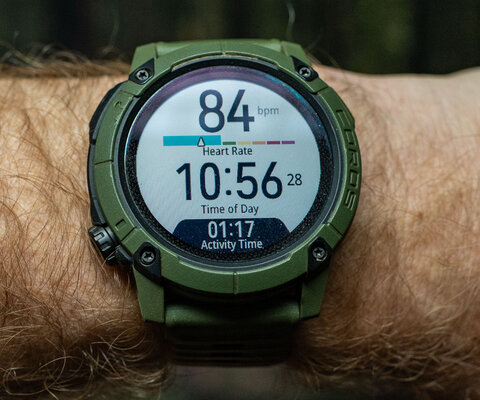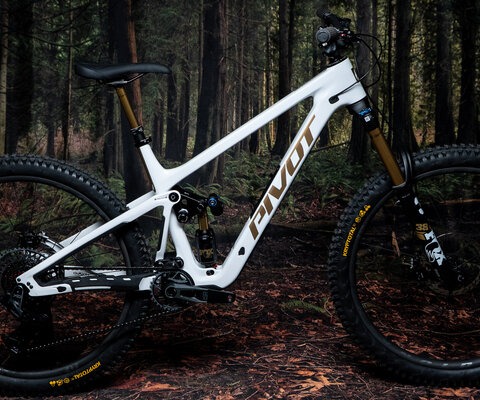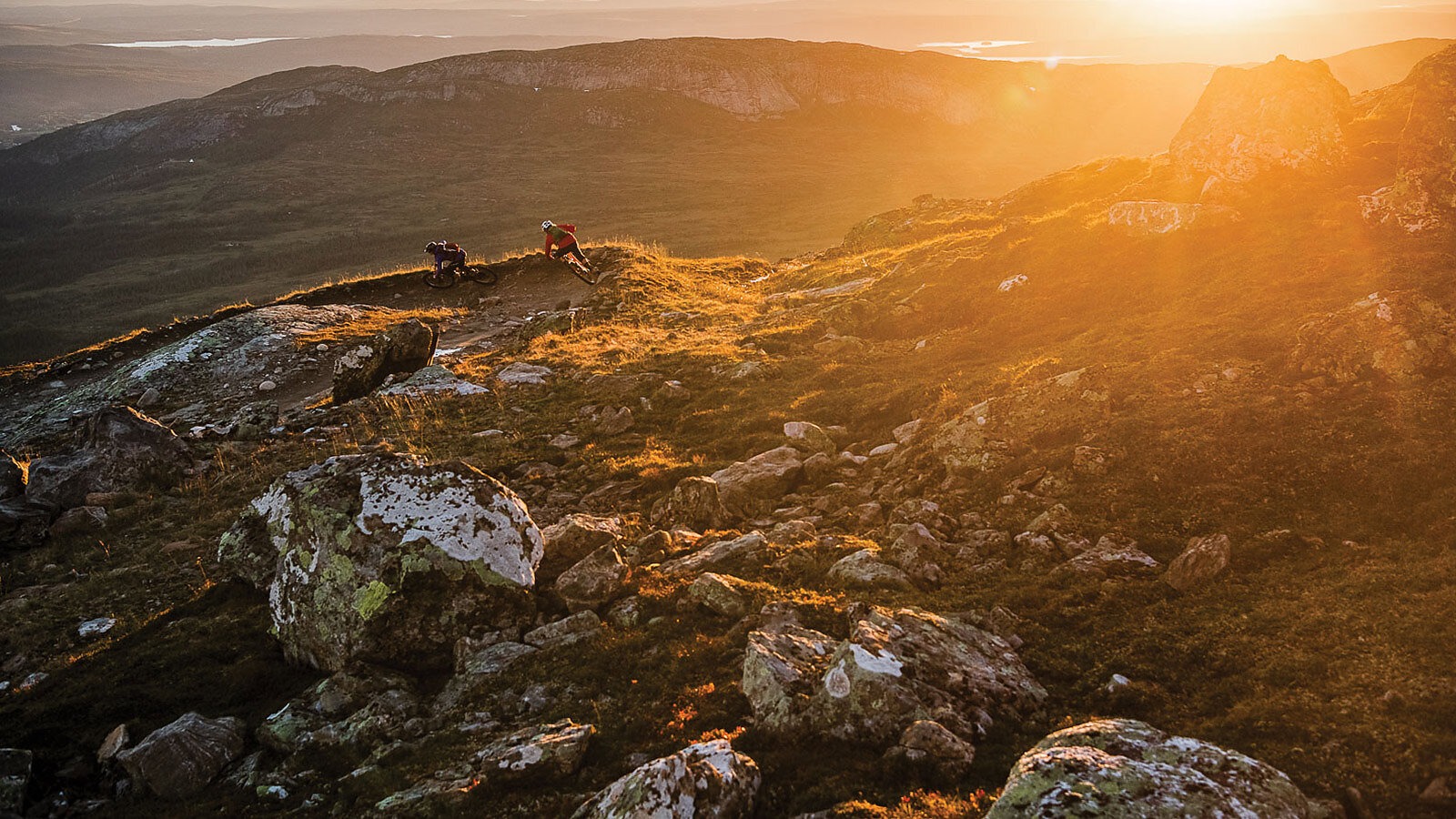
A Midsummer Bike Dream Fat Tires Flourish in a Swedish Mountain Town
Words by Mattias Fredriksson
In a magnificent landscape resembling a blend of Moab and the moon, granite slabs provide sticky traction for my tires. Following the last Ice Age, these rolling mountains of northern Scandinavia were shaped by deposits and formations during glaciation and deglaciation. Relentless forces churned and sculpted the surface. Now, more than 100,000 years later, the rugged alpine that surrounds Åre, Sweden is a playground for mountain bikers.
Above town, the rocky trails roll fast and smooth. They’re steep in places but always manageable. Riding here can be unforgiving; singletrack this far north is naturally demanding, with huge variations over short distances.
But during summer, when sunset and sunrise meld together into one monthslong stretch of light, when distant, puffy cumulus clouds provide the only contrast to an otherwise bluebird sky, when evenings spent chasing friends down singletrack spill well past 10 p.m., Åre is magisk.
On one such night following a hot day, Janne Tjärnström and I explore the mountain’s less-ridden zones. As the sun hovers low across the sky, the light is warm, the clouds almost pink—a fantastic setting for a bike ride.
After an exploratory mission to ride slabs below Mount Åreskutan, a 1,420-meter (4,660 feet) chunk of rock synonymous with Åre, we follow an old hiking trail down the mountain. The view is astonishing: the vast, wild, and open land of northern Sweden provides the foreground for distant peaks across the border in Norway.
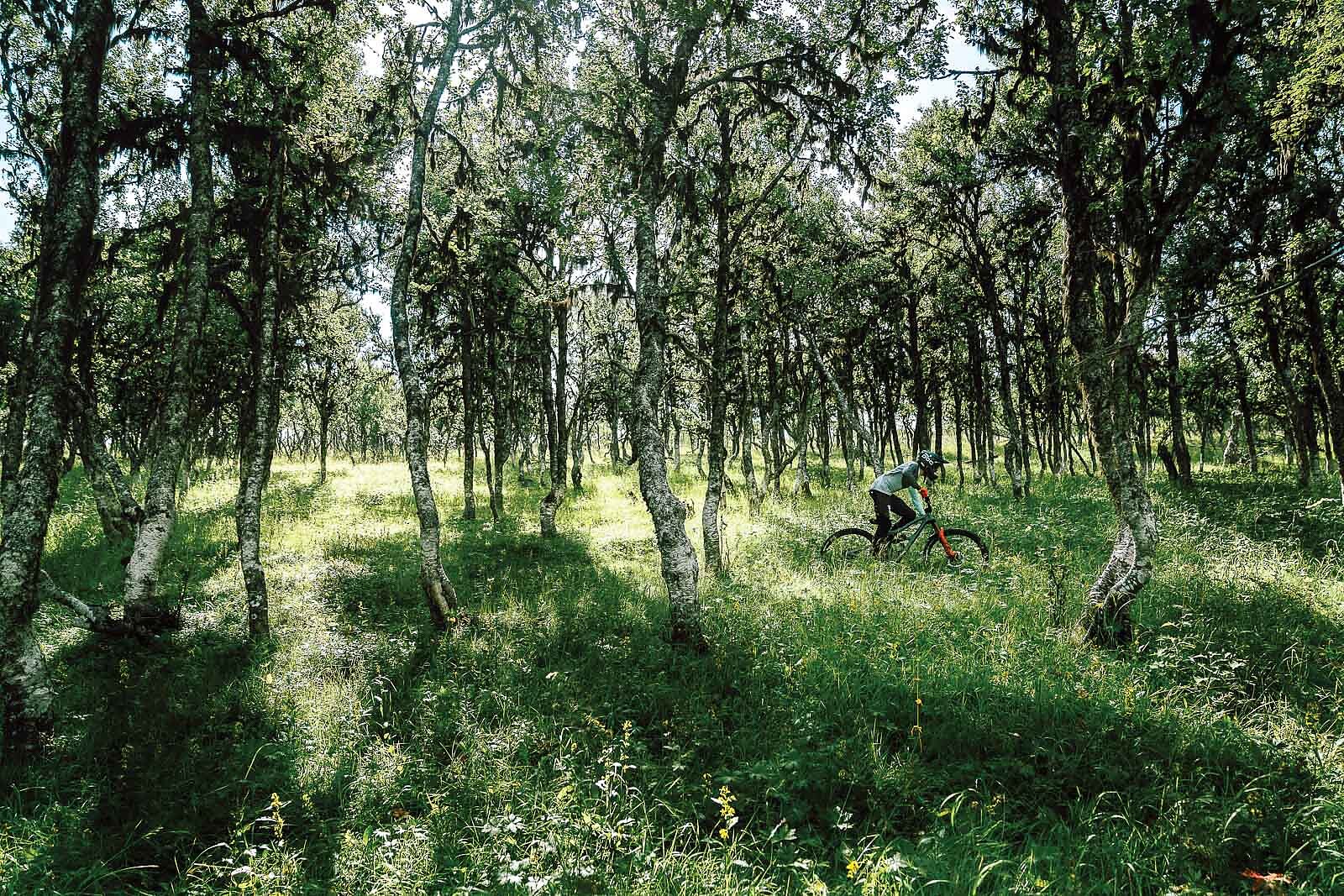

The terrain is rough, but we enjoy smooth slabs between the challenging sections. Back down at the tram station, the hardpacked dirt of Åre Bike Park’s popular, machine-built flow trail, Easy Rider, feels like a blessing in comparison. Tjärnström rides first, and I follow him off jumps, through berms, and over fun rollers.
After a few big berms and a step-down, Tjärnström’s speed increases and the space between us grows. He disappears around a corner and when I round it, I catch a quick glimpse of his back far off in the distance. After 30 years of mountain biking in Åre, at 58 years old, Tjärnström knows these trails better than most.
Tjärnström grew up in Kiruna, a Swedish mining town 145 kilometers north of the Arctic Circle, where it’s winter eight months of the year. Like most of his friends, he started skiing at a young age and got hooked immediately. Eventually, he got into mogul skiing and, in his early 20s, he joined the national team. Through the ski team’s equipment program, he scored a good deal on a red 1989 Research Dynamics Coyote hardtail.
“In the beginning, the bike was solely a tool for off-season training,” Tjärnström said. “Before that, the summer training was all about trail running and weightlifting, so mountain biking became a more playful way to train [for skiing].”
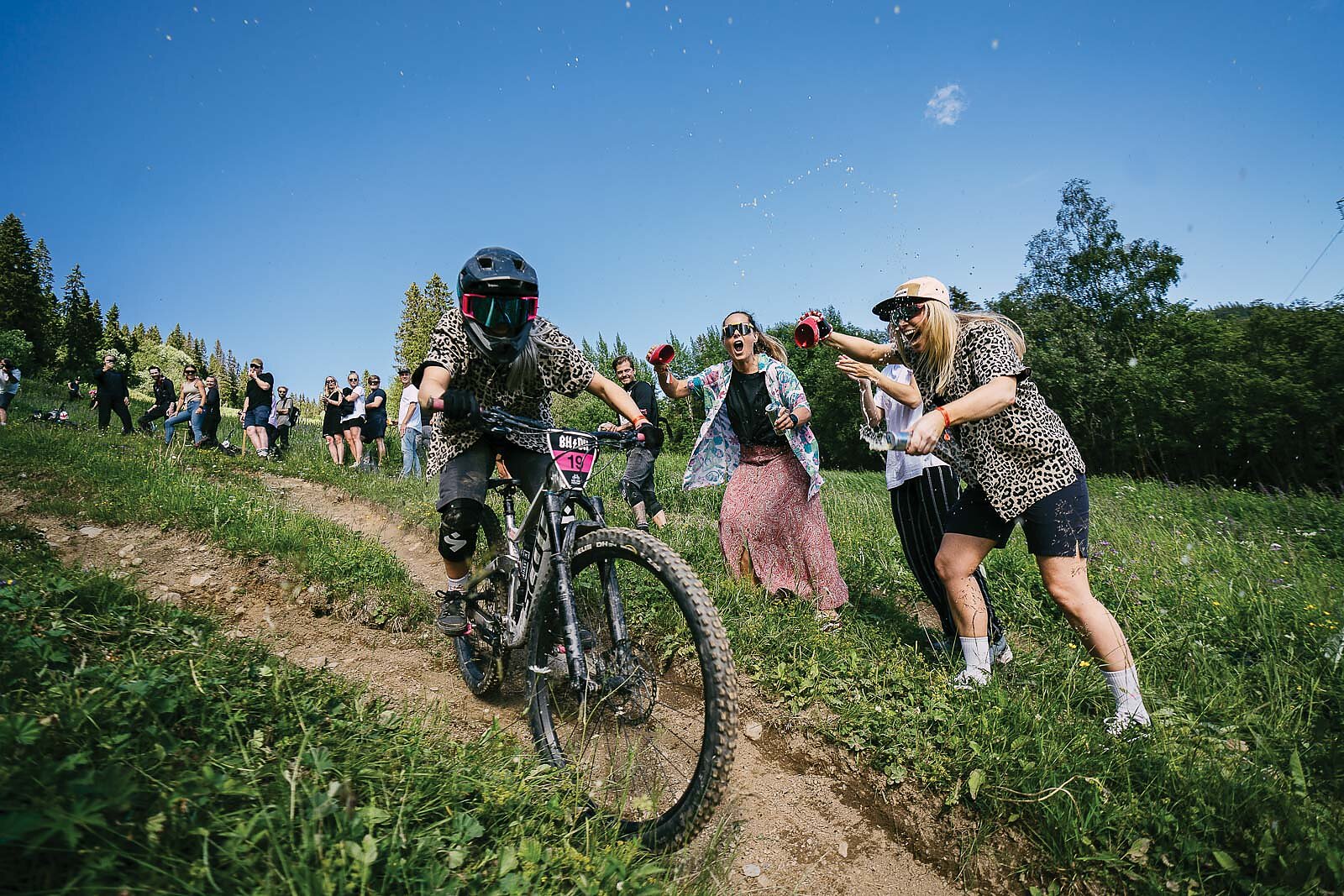
“We were only 10 to 15 mountain bikers in Åre back then, so we all knew each other. I clearly remember when my friend Marcus got his first dual-suspension bike, it was the first time I saw one in real life.”— Janne Tjärnström
A few years later, he met a girl from Åre, known then as Sweden’s most popular ski town. Tjärnström followed his heart, packed his belongings, and moved 1,000 kilometers south. In the Åre valley, he quickly met the few other mountain bikers in town and started exploring old hiking trails and fire roads.
“We were only 10 to 15 mountain bikers in Åre back then, so we all knew each other,” Tjärnström said. “I clearly remember when my friend Marcus got his first dual-suspension bike, it was the first time I saw one in real life.”
Åre has always been a hub where new trends form, catch on, and spread to the rest of Scandinavia and beyond. It’s a creative and electric place with open-minded people who routinely go against the norm. So, by the early ‘90s, Åre had already joined the list of little mountain towns around the world where mountain biking was taking root.
But mountain biking was still relatively unknown to the majority of Swedes, most of whom followed more traditional sports such as soccer, especially after the 1994 World Cup in which the country took home an unexpected bronze medal. Of course, riders in Åre couldn’t have cared less about what the masses were interested in; they were busy crowding next to tourists on the tram as they hitched a lift up the local mountain so they could bomb straight back down 900 vertical meters of steep hiking trails on bikes with pogo stick suspension.
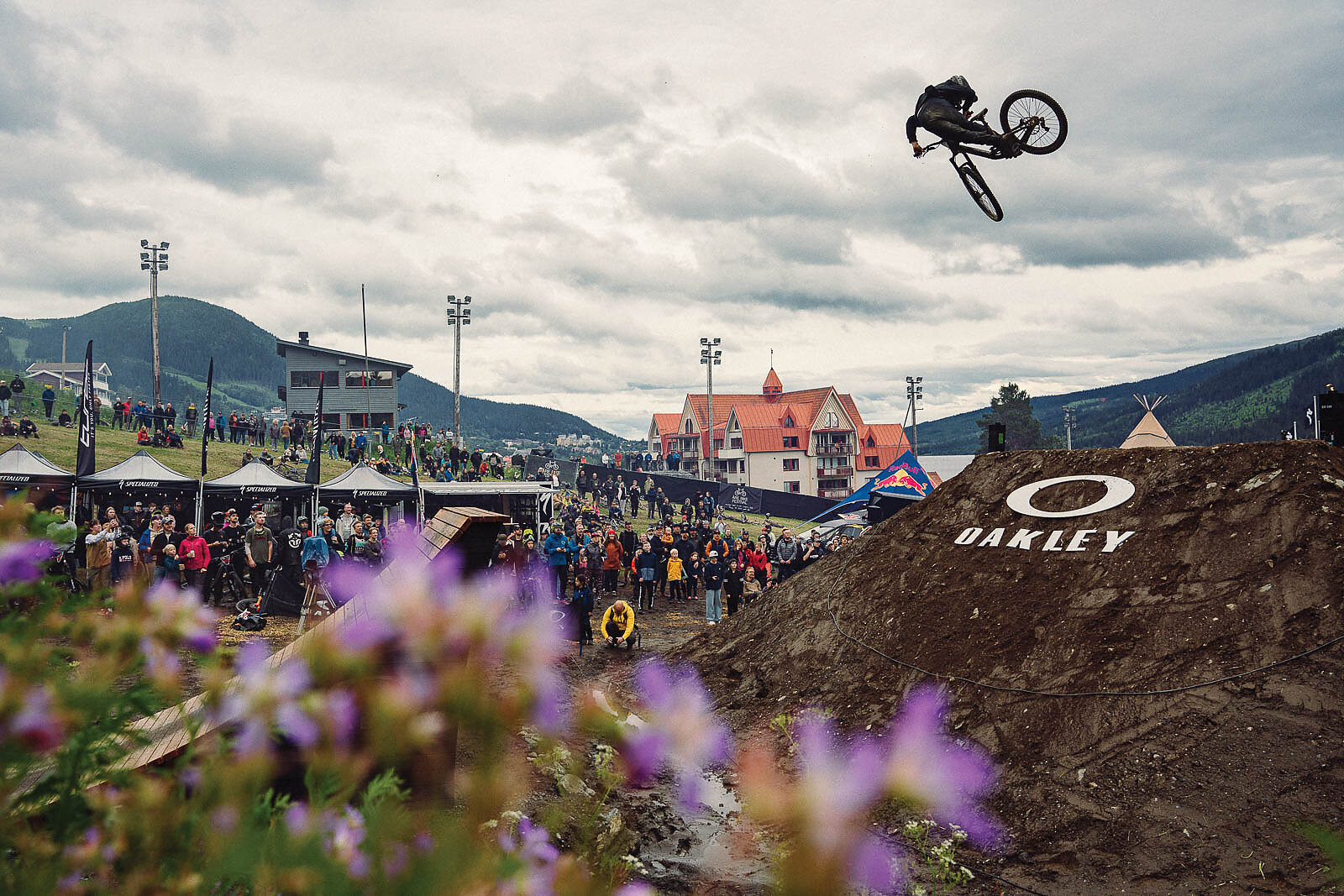
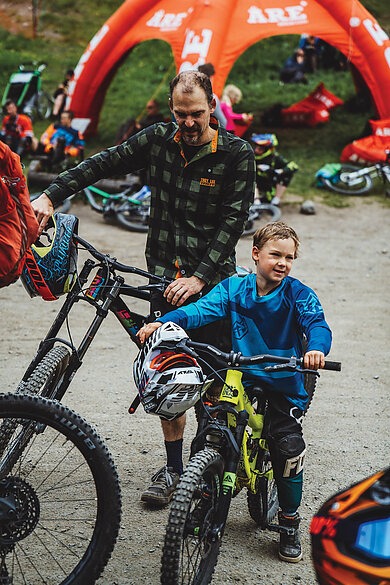
And when they weren’t rattling their teeth on the ski hill, these passionate riders were scheming ways to bring mountain biking’s biggest stage to Åre. First came convincing the lift company, then came getting the tourism organization on board, and, finally, the plan was brought to the UCI.
In late May 1996, the UCI World Cup rolled into town just as a spring snowstorm laid waste to the meticulously prepared downhill track. By the time the world’s best were on course, it was a mud pit. Although conditions weren’t ideal, Åre had, nonetheless, caught the attention of mountain biking’s tight-knit race community. Three years later, the World Championships were held there, cementing the town’s status as a worthy destination for any serious mountain biker.
During the ensuing decade, summer opera-ions continued to expand with the addition of more natural trails and bike park infrastructure. The local bike club, Åre Bergscyklister, played an essential role in this progress. The club was initially formed to apply for hosting the World Championships and, after the event’s success, support from locals and visitors rocketed to a peak of 900 members in 2000.

But growth stagnated and, in 2010, the organization sought a reboot by creating a bike festival aimed at bringing the spotlight back to Åre.
“The town and the Swedish mountain bike scene needed a gathering, and Åre Bike Festival became that community event we had missed,” Tjärnström said. “It gave mountain biking in Åre a vital injection.”
The annual festival, which will take place July 5-9 in 2023, is a weeklong celebration of all things mountain biking—grass root events, a whip-off competition, a hill climb, an enduro race, kids’ events, and dedicated photo and video challenges. Mainly it’s just a fun week of riding bikes, good vibes, and an opportunity for mountain bikers from all over Scandinavia and beyond to get together and meet like-minded people.
In recent years, the event has grown to the point of attracting fat tire superstars. In 2021, Greg Minnaar enjoyed a week’s worth of Åre’s lunar landscape singletrack between World Cup races. His visit brought yet another wave of exposure to the quality of the riding in this tiny town of some 3,500 people.
Robin Wallner has resided near Åre with his family since 2013. An Enduro World Series (EWS) veteran, Wallner transitioned to a team manager role in 2021 after a long and successful race career. Now, along with his job running the Ibis Cycles Enduro Team and helping the Santa Cruz-based brand with product development and marketing, he’s part of a new generation of young locals raising the next crop of purebred skiers and mountain bikers in the Swedish alpine.
“The more I have traveled, both for racing and biking in general, I have realized how good [of] mountain biking we have,” Wallner said. “Åre is a unique blend of alpine riding, gnarly old-school zones, machine-built trails, and fantastic trail riding.”
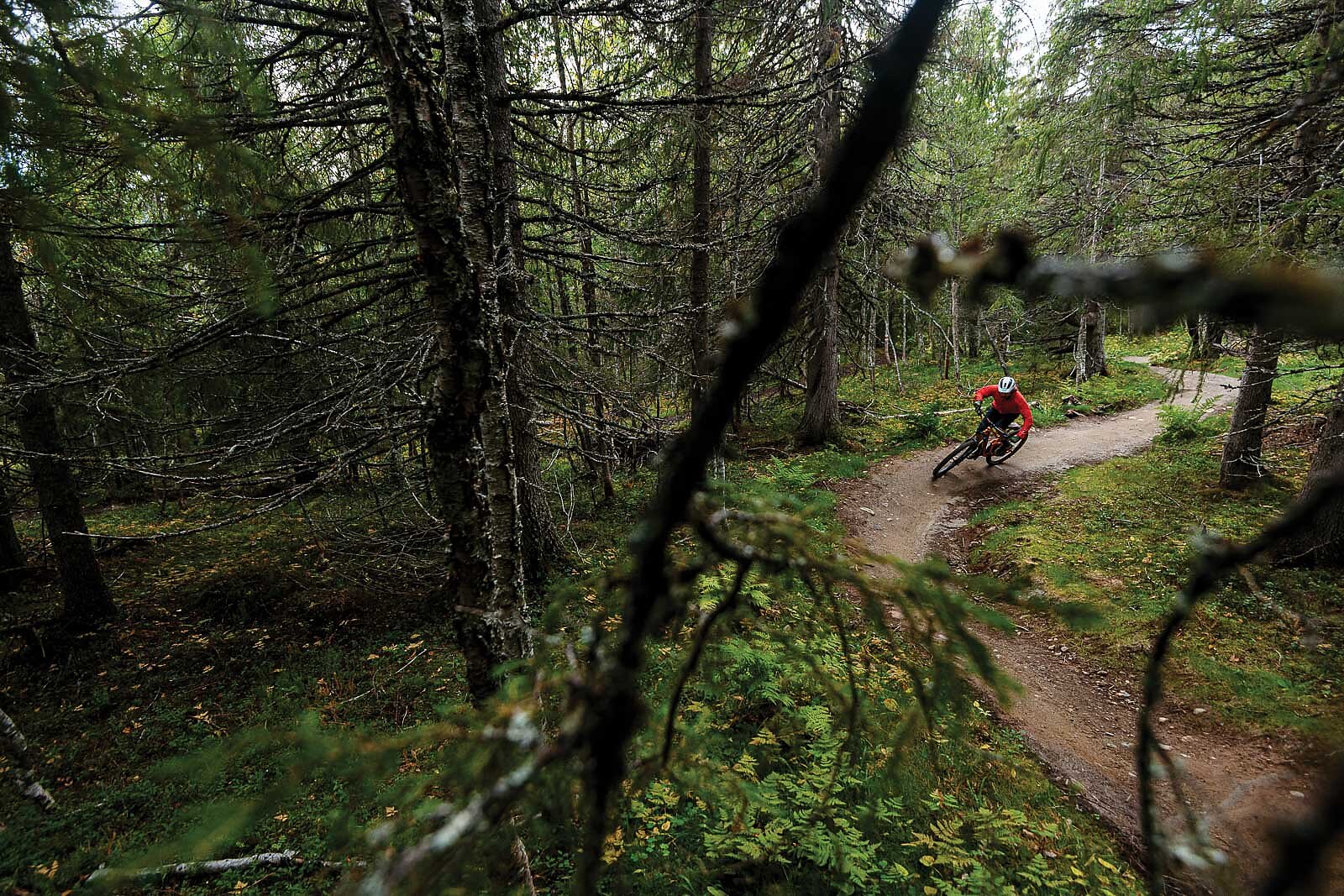
In recent years, an effort has been made to bolster local trail offerings for children and beginners. The buttery smooth Serpentinen flow trail gently winds its way down the bike park. For those more interested in cross-country riding, the Björnen Trail Center now boasts a variety of approachable singletrack and a skills area and pumptrack. This continued development allows families to enjoy the sport together and gives visitors—some with no previous mountain biking experience—a chance to feel the joy of gliding through the woods on two wheels. This accumulation of amenities has lifted Åre from small, seasonal ski town to year-round resort known today as Sweden’s adventure sports capital.
“Until a few years ago, we were missing a trail center with trails for beginners and kids,” Wallner said. “Björnen Trail Center is the perfect spot to spend an afternoon with the family—everyone can have fun there.”
Five years ago, Wallner and his partner Elin— also a ripper on the bike—bought a small farm in Edsåsen, a small village close to Åre. There, with their two young boys, the couple is enjoying life on the doorstep of Sweden’s wilderness. Last summer, they took their 4-year-old up the chairlift for his first turns in the bike park. The fun doesn’t stop at home, either—they’ve built jumps and berms on their property, and there’s even access to more remote singletrack nearby.
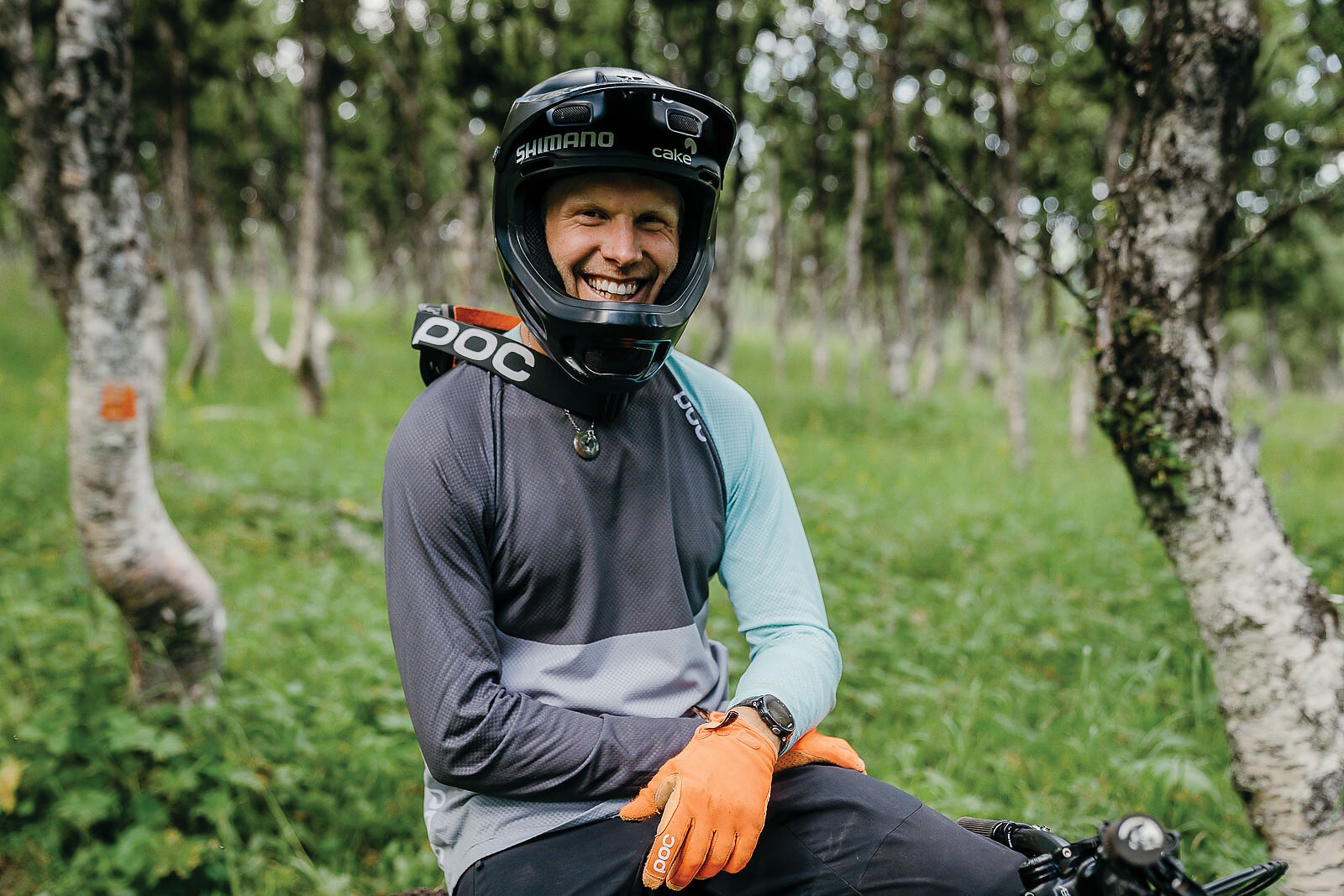
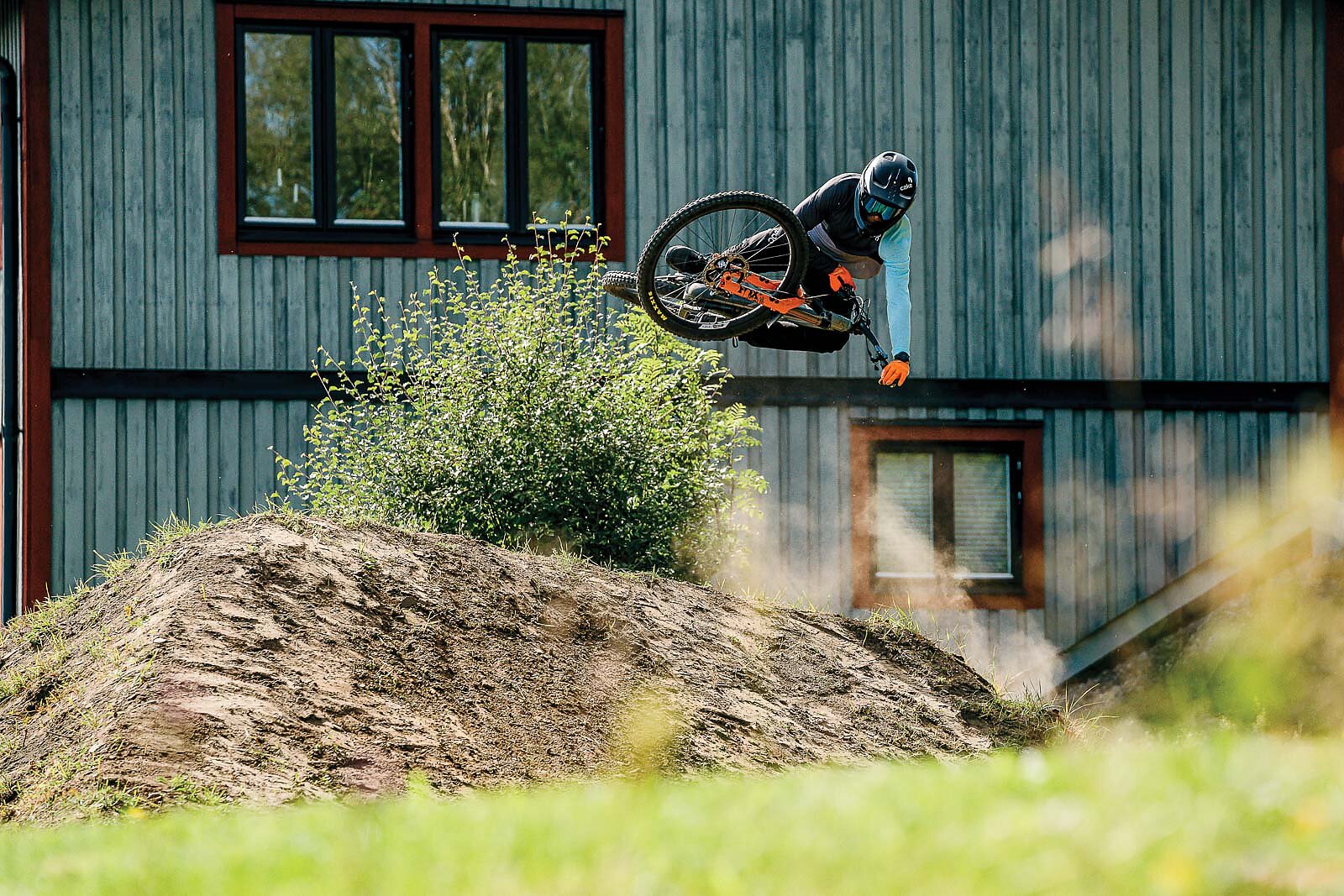
“We were so lucky to find this place in the countryside; it’s such a great place to raise kids,”Wallner said. “The first things we built after purchasing the farm were, of course, some jumps. That accelerated when the kids were born. Now more and more of the kids in the neighborhood ride bikes, so I want to make sure there is something fun for all the kids when they come over to us.”
A massive shift is taking place in Åre. Long gone are the days when skiing ruled above all else and mountain biking was reserved for the hardy few willing to clamor down hiking trails or those originally cut in by animals.
“It’s far from when I came to Åre as a 13-year-old,” Wallner said. “[I] rode down from the top of the mountain pretty much on old reindeer and cow trails.”
Skiing is still Åre’s most popular recreational activity, but things are changing quickly as the region’s trail systems mature and a generation of local kids, such as the Wallners, grow up knowing no difference in the quality of outdoor pursuits to be had during summer versus winter. To them, Åre will have always existed as a place any mountain biker would dream of riding.
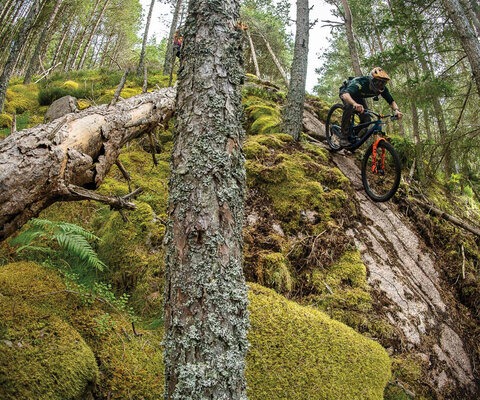
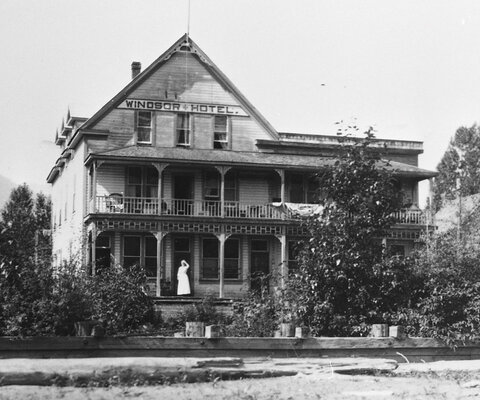
![“Brett Rheeder’s front flip off the start drop at Crankworx in 2019 was sure impressive but also a lead up to a first-ever windshield wiper in competition,” said photographer Paris Gore. “Although Emil [Johansson] took the win, Brett was on a roll of a year and took the overall FMB World Championship win. I just remember at the time some of these tricks were still so new to competition—it was mind-blowing to witness.” Photo: Paris Gore | 2019](https://freehub.com/sites/freehub/files/styles/grid_teaser/public/articles/Decades_in_the_Making_Opener.jpg)
